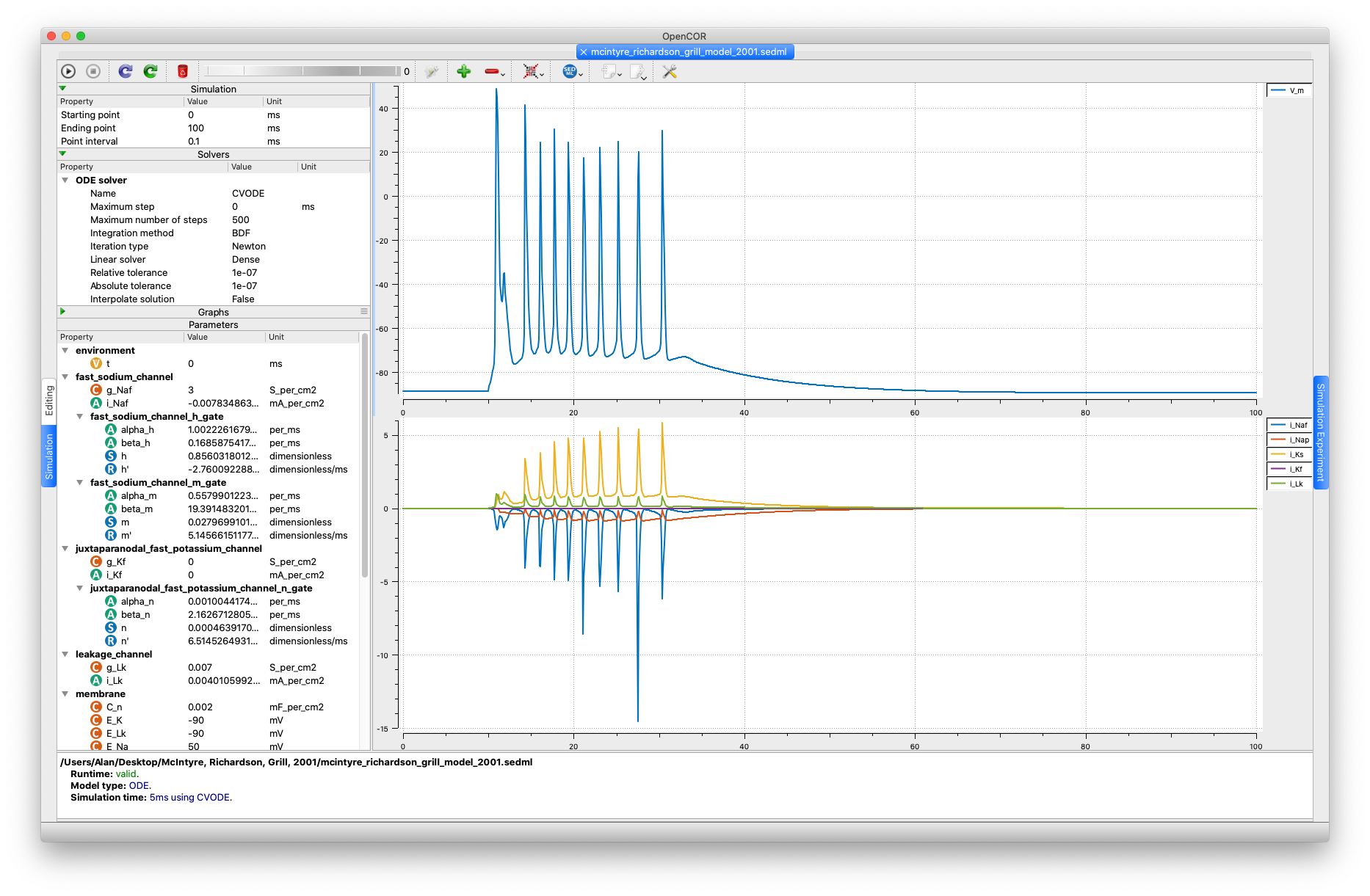Location: McIntyre, Richardson, Grill, 2001 @ 125f548ce204 / mcintyre_richardson_grill_model_2001_documentation.html
- Author:
- Alan Garny <a.garny@auckland.ac.nz>
- Date:
- 2020-05-26 13:56:08+12:00
- Desc:
- Added some "proper" documentation. Also, parameterised the stimulus duration and amplitude, as well as slightly changed the value of those.
- Permanent Source URI:
- http://models.cellml.org/workspace/5f5/rawfile/125f548ce204c1d815298d2c8c1d9b774d89e3a7/mcintyre_richardson_grill_model_2001_documentation.html
Encoded in CellML by Alan Garny
Auckland Bioengineering Institute, University of Auckland
Model Status
This model has been encoded using the information available in the published article. Only the nodal part of the model has been implemented:
-
No equation to compute the membrane potential is provided.
However, the model relies on the Hodgkin-Huxley formulation, so we rely on that formulation to compute the membrane potential.
We use
Cnas the capacitance andiNaf,iNap,iKsandiLkas the currents involved in the membrane dynamics. We also useiKf, but by default its conductance is set to0 S/cm2. The authors mention that, based on experimental data, the value forgKfshould be about0.02 S/cm2, hence they tested their model using a range of values between0.01and0.04 S/cm2. -
No initial values for the membrane potential (
Vm) and the different gating variables (m,h,p,sandn) are provided. So, we setVmto-80 mV(i.e. the resting potential used in the internodal segments) and the different gating variables to0. From there, the model was run without any stimulus and for several days worth of simulation to reach steady state. -
No information about the kind of stimulus that should be applied to generate a default action potential is provided.
However, various stimulus durations are mentioned in the published article, varying between
0.1and3 ms. So, we arbitrarily went for0.5 ms. As for the stimulus amplitude, we went for the smallest value that yields an action potential (actually, a series of action potentials), i.e.0.05 mA/cm2. (A stimulus amplitude of0.04 mA/cm2will just result in a blip.)

|
| Output of running the SED-ML file in OpenCOR. |

